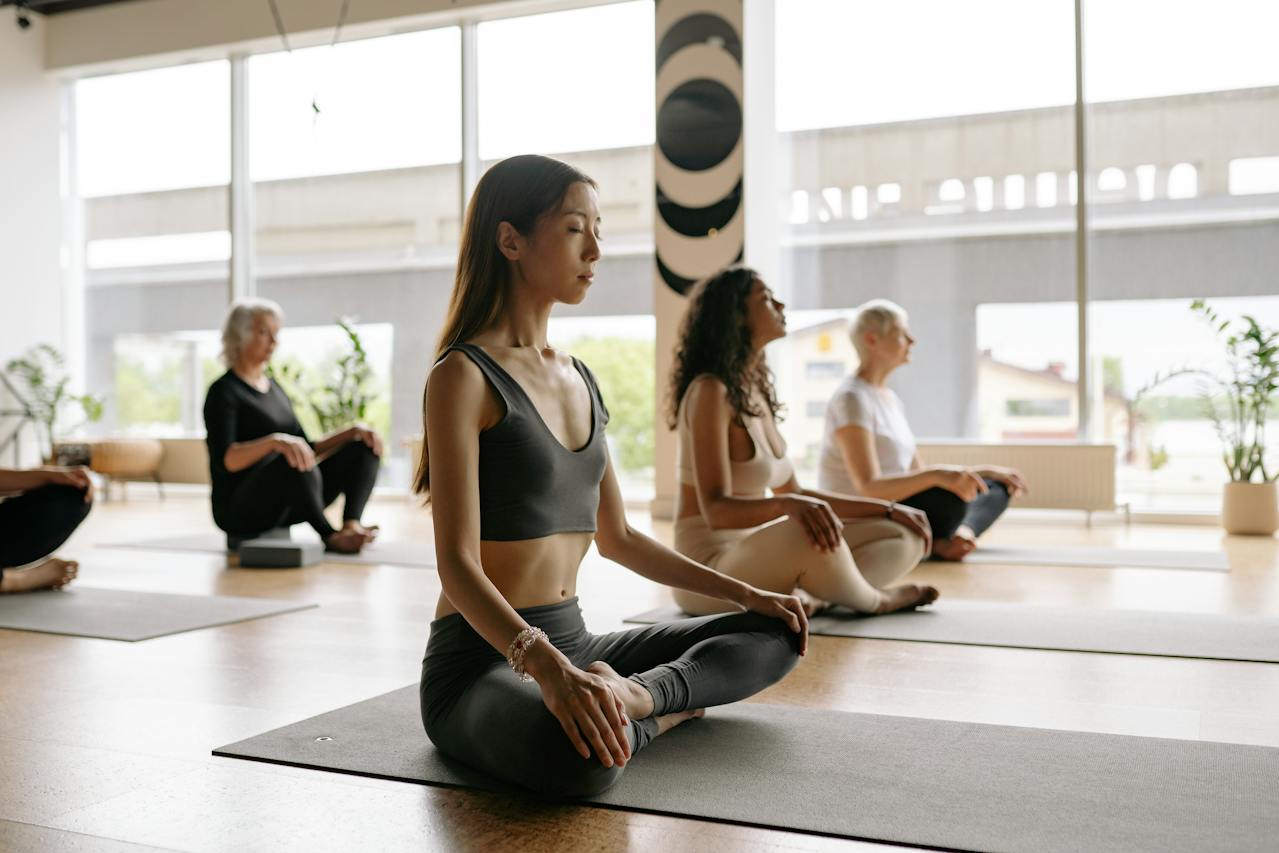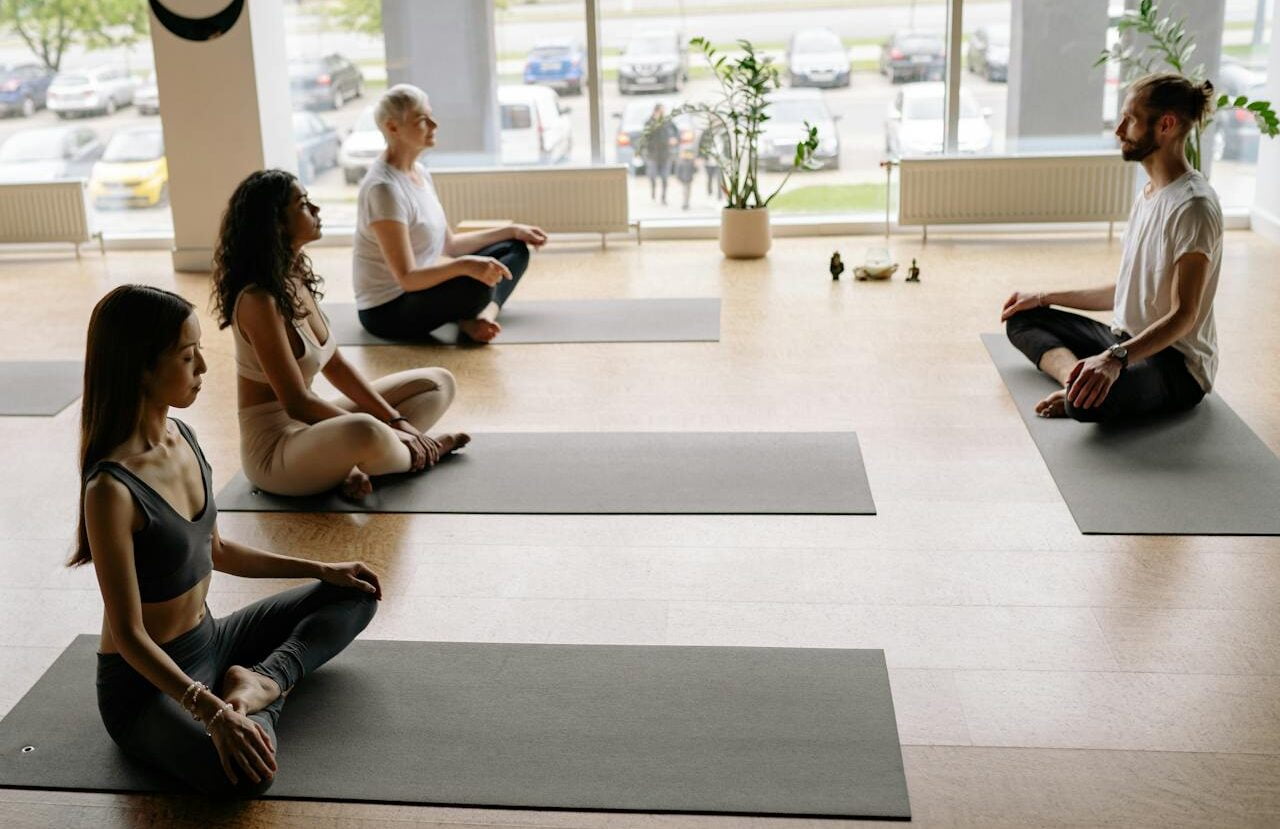If you’re struggling to fill up your yoga classes, fear not! A powerful website for your yoga studio can be the solution you need to attract new students and boost your business. By following a few essential steps, you can build a website that drives foot traffic and helps grow your practice with confidence. Let’s take a closer look at those steps now.
Planning and Content Creation of a Yoga Studio Website
When creating a website for your yoga studio, you must decide between a single-page or multi-page site. Regardless of your choice, planning your yoga homepage design is a good place to start.
Your homepage is the first impression visitors get. You want your best photos and messaging on the top of the page to keep their attention. Before creating your homepage, you will want to have some content ready. Content is the building blocks of good design.
How to Write Compelling Yoga Website Content
Follow these steps to create impactful writing for your website:
Define Your Audience
Understand who your website is for. Are you targeting yoga enthusiasts, beginners, or experienced practitioners? Knowing your audience helps tailor your language and content to speak directly to their interests and needs.
Establish Your Tone and Voice
Decide on the tone and voice of your writing. A calming, welcoming, and inspirational tone might work best. Your voice should reflect your studio’s personality, whether it’s serene and peaceful, energetic and vibrant, or focused on health and wellness.
Outline Your Main Messages
What are the key messages you want to convey? This might include the benefits of practicing yoga at your studio, the unique qualities of your instructors, or the variety of classes you offer. Highlight what sets your studio apart.
Draft Content for Core Pages
Start writing content for the main pages of your website. This typically includes the homepage, about us, services or classes offered, instructor profiles, testimonials, and contact information. Ensure each page serves a clear purpose and adds value to the visitor’s experience. AI-powered tools, such as Google’s Bard or OpenAI’s ChatGPT, can assist you in generating content quickly. Simply provide the AI with information about your business, and ask it to produce content based on that information.
Focus on Benefits, Not Just Features
Instead of just listing the features of your classes or studio (like class times, yoga styles, etc.), focus on the benefits these features bring to your clients. For example, explain how different yoga styles can contribute to overall well-being or how your classes cater to various skill levels.
Proofread and Edit
Ensure your content is free from spelling and grammatical errors. Well-written, error-free text reflects professionalism and attention to detail. Free tools like Grammarly can streamline the editing process.

Tips for Choosing High-Quality Images for Your Yoga Website
To select or capture images for the homepage of your yoga website, you can follow these steps:
Best Yoga Studio Website Photos
Choose images that embody the spirit of your studio. If your studio emphasizes tranquility and peace, use photos with soft lighting and serene settings. For a more dynamic studio, consider vibrant and energetic images.
Showcase Real Classes and Instructors
Authenticity resonates with viewers. Use real photos from your classes and feature your actual instructors. This approach helps potential clients get a realistic feel for what attending your studio is like.
Diversity and Inclusivity
Ensure your images represent a diverse range of people practicing yoga. This includes different ages, body types, ethnicities, and skill levels. Inclusivity in your imagery can make a broader audience feel welcome.

High-Quality Images for Your Yoga Website Design
Prioritize high-resolution and professionally taken photographs. Quality images convey professionalism and enhance the overall aesthetic of your website. Many of the newer cell phone cameras are professional grade.
Balance Posed and Candid Shots
While posed shots can look professional and polished, candid images of people genuinely enjoying your classes can add a touch of authenticity and warmth.
Consider Composition and Lighting
To capture visually appealing photographs, focus on effective lighting and composition techniques. Make sure your images are brightly illuminated, crisp, and structured in a way that guides the viewer’s attention to the key elements of the picture. Try out various perspectives, framing methods, and exposure adjustments to accomplish this.
Align Images with Your Other Yoga Website Content
The images should complement the written content on your homepage. For instance, if you highlight a specific class or instructor in the text, consider including a corresponding image.
Legal Considerations for Using Stock Photos on Your Yoga Website
If you’re using stock images, ensure they are royalty-free or that you’ve purchased the correct licenses. If you’re taking photographs, get consent from individuals featured in the images, especially if they are clients. Websites like Pexels and Pixabay are excellent sources of free photos for your yoga web design.
Feedback and Testing
Just like with written content, get feedback on your images. Sometimes what looks good to you might not resonate with others. Consider A/B testing different images to see which ones perform better in terms of engagement and conversion.

What Elements to Include on the Homepage
Key elements on this page include but are not limited too:
Yoga Class Schedule
The class schedule is more than just a list; it’s the heart of your studio’s offerings. It should be prominently displayed, easy to navigate, and updated regularly. Each class description should provide enough detail to entice different levels of yogis, from beginners to advanced practitioners. Incorporating an online booking system here can streamline the process, making it straightforward for clients to sign up for their desired classes. A well-organized schedule reflects the professionalism and organization of your studio.
Instructor Profiles
The instructor profiles are a window into the soul of your studio. They should do more than just list qualifications; they should tell a story. Each profile can include a professional photo, a brief biography, and a personal philosophy or approach to yoga. This section is an opportunity to showcase the diversity and expertise of your team, building trust and rapport with potential clients. Instructor profiles can help clients feel more connected and comfortable even before they step into the studio.
Adding Testimonials to Your Website
Testimonials are powerful tools for building credibility and trust. This section should feature genuine feedback from current clients, highlighting their experiences and the benefits they’ve gained from your studio. It’s not just about praising the studio but also about sharing stories of transformation and achievement. Testimonials serve as social proof, often influencing new clients’ decision-making process. It’s important to regularly update this section to reflect the ongoing positive impact your studio has.
Calls to Action (CTAs)
CTAs are the guiding signals on your website, steering visitors towards engagement. They should be clear, compelling, and strategically placed. Whether it’s encouraging visitors to sign up for a class, learn more about a particular program, or get in touch with the studio, each CTA should prompt an immediate response.
Use persuasive language that resonates with your audience, and consider using contrasting colors or design elements to make these CTAs stand out. Effective CTAs can significantly increase conversion rates, turning visitors into clients.

Boosting Your Yoga Studio Website with SEO: Keywords and Image Optimization
To expand your audience and attract more customers, optimizing your website for search engines is just as important as creating engaging content. There are two key elements of SEO that you need to focus on: keyword targeting and image optimization. By mastering these elements, you can improve your website’s search engine ranking and visibility to potential clients.
Targeting the Right Keywords
Imagine your website as a conversation with your audience. Keywords are the bridge that connects your offerings to their searches. Choosing the right keywords is like speaking their language, ensuring your studio appears when they seek yoga classes or related information.
Here’s how to strategize your keyword game
- Identify your audience: Define who you’re targeting, whether it’s beginners seeking gentle yoga, experienced yogis looking for advanced classes, or those interested in specific styles like Vinyasa or Yin.
- Research relevant keywords: Tools like Google Keyword Planner and Ahrefs can help you discover popular searches related to your niche.
- Target a mix of keywords: Include broad terms like “yoga classes near me” and long-tail keywords like “hot yoga for stress relief” to capture diverse audiences.
- Incorporate keywords naturally: Don’t stuff your content with keywords; weave them seamlessly into your writing, titles, and descriptions.
- Optimize for local SEO: If you attract clients primarily from your area, including your city or neighborhood in your keyword choices.
Optimizing Your Images for Search
Optimizing website images can boost your SEO and improve user experience. Here are some tips to optimize your images.
- Use descriptive filenames: Instead of “IMG_2345.jpg,” name your images with relevant keywords, like “gentle-yoga-pose.jpg.”
- Write compelling alt text: This brief text describes the image to search engines. Be specific and relevant, including keywords to improve visibility.
- Compress your images: Large files can slow down your website, impacting user experience and SEO. Use tools like JPEGmini or TinyPNG to compress them without sacrificing quality.
- Use alt tags and captions: These provide more information about the image and can be used to add keywords naturally.
- Consider schema markup: This provides structured data about your images, helping search engines understand their content and context.
SEO is something that needs to be maintained over time. Keep track of how your website is doing, see how well your keywords are working, and adjust your approach as needed. By investing in SEO, you can make sure that people can easily find your yoga studio website online. This will help you attract more clients and guide them towards achieving peace and better health.

Going beyond the homepage
Other pages to consider are:
About Us: Share your studio’s background and philosophy, fostering a connection with visitors.
Benefits of Yoga: Informs about the positive impacts of yoga, encouraging new clients to join.
Schedule and Pricing Details: Provides detailed information on class times and prices, helping clients make informed choices.
Contact Page: Offers an easy way for clients to contact you with questions or feedback.
Blog: Delivers engaging content, drawing in more visitors and enhancing your site’s search engine optimization (SEO).
Choosing the Right Platform for Designing Your Yoga Website
When it comes to designing your yoga studio’s website, the decision largely boils down to two primary options: utilizing a Content Management System (CMS) or opting for a website builder. Each choice comes with its own set of advantages and considerations, tailored to different needs and levels of technical proficiency.
When selecting a website builder or CMS in 2024, it’s crucial to choose one with mobile responsive design features. Designing a website that works well on mobile devices has several advantages. First, it attracts more visitors to your site. Second, it can improve your website’s ranking in search engine results. Therefore, adopting a mobile-first approach in website design is a smart move.
Popular Content Management Systems (CMS)
- Flexibility and Customization: CMS platforms, like WordPress, Joomla, or Drupal, offer a high degree of customization. They are ideal if you’re looking for a unique website design that can be tailored to fit the specific needs and branding of your yoga studio.
- Extendable Features: With a vast array of plugins and add-ons available, a CMS allows you to add advanced functionalities such as booking systems, membership areas, and more.
- Learning Curve: Using a CMS might require a steeper learning curve, especially if you aim for a highly customized site. You may need some basic knowledge of coding, or you might consider hiring a web developer.
- SEO Advantages: CMS platforms often provide better tools and plugins for search engine optimization (SEO), which can help improve your website’s visibility in search results. These include tools like Yoast SEO and All-In-One SEO for WordPress.
Popular Website Builders
- User-Friendly and Convenient: Platforms like Wix, Squarespace, or Weebly are known for their user-friendly interfaces. They are great for those with limited technical skills or who prefer a more straightforward, drag-and-drop approach to website design.
- Speed and Simplicity: Website builders allow you to get your site up and running quickly, with pre-designed templates and intuitive design tools.
- Limited Customization: While they offer ease of use, website builders can be somewhat limiting in terms of customization and functionality compared to CMS.
- Integrated Features: Many website builders come with built-in features specific to businesses, such as appointment booking tools, which can be beneficial for a yoga studio.
Making the Right Choice
The decision between a CMS and a website builder should be based on your specific needs, technical ability, and the level of customization you desire for your yoga studio website. If you prioritize ease of use and quick setup, a website builder might be the way to go. However, if you need a more customized and scalable website and are comfortable with a bit more complexity, a CMS could be the better choice.
Ultimately, your website is a vital tool in attracting and retaining clients, and the platform you choose should empower you to create an online presence that accurately reflects the essence and values of your yoga studio. If you need a website built with WordPress, book a demo with us and we’ll handle all the technical work!
In conclusion, creating an effective website for your yoga studio requires careful planning, compelling content, and appealing visual design.




